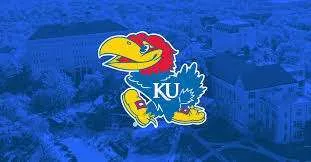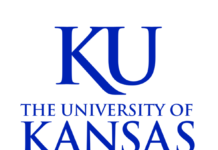From the Office of Public Affairs | http://www.news.ku.edu
KU scholars mark 400th anniversary of Shakespeare’s first folio with new exhibition
LAWRENCE — An exhibition at the University of Kansas titled “To the Great Variety of Readers: Celebrating the 400th Anniversary of Shakespeare’s First Folio” will open Sept. 21 at the Kenneth Spencer Research Library. In the exhibition, University of Kansas scholars highlight the importance of the first collection of the Bard’s works as well as the importance of libraries in preserving arts and scholarship.
New Kansas Statistical Abstract offers relevant state information, including expanded data on climate
LAWRENCE — The 57th edition of the Kansas Statistical Abstract, an annually released compendium of data about Kansas, is now available from the Institute for Policy & Social Research at the University of Kansas. The KSA publishes data in 17 sections ranging from agriculture to vital statistics and health. These data help community leaders, entrepreneurs, researchers and others make informed decisions and understand how Kansas is changing.
School of Architecture & Design announces 2023 Fall Architecture Lecture Series
LAWRENCE — The School of Architecture & Design at the University of Kansas will welcome architectural and experiential design leaders from across the country to the University of Kansas this fall to illuminate new ideas and inspire purpose-driven design practice. The 2023 Fall Architecture Lecture Series begins Sept. 15 and will feature Stephen Cavanaugh with DLR Group.
Full stories below.
————————————————————————
Contact: Mike Krings, KU News Service, 785-864-8860, mkrings@ku.edu, @MikeKrings
KU scholars mark 400th anniversary of Shakespeare’s first folio with new exhibition
LAWRENCE — The idea of forgetting classic Shakespeare plays like “Macbeth” or “Julius Caesar” is nearly unthinkable. But if not for the foresight of two actors and friends of William Shakespeare to publish a book 400 years ago, those plays might have been lost forever. A University of Kansas professor is teaming with KU Libraries to mark the 400th anniversary of the playwright’s first folio, the historical legacy of the publication and the importance of libraries in preserving arts and scholarship.
In 1623, seven years after his death, Shakespeare’s friends, actors John Heminge and Henry Condell, brought together a collection of 36 of his plays that were the first published collection of the Bard’s works. Half of those works were previously unpublished. The folio, titled “Mr. William Shakespeare’s Comedies, Histories & Tragedies” turns 400 this year.
An exhibition at the Kenneth Spencer Research Library titled “To the Great Variety of Readers: Celebrating the 400th Anniversary of Shakespeare’s First Folio” will open Sept. 21 and remain on view to students, scholars and the public throughout the fall. David Bergeron, professor emeritus of English, curated the exhibition with assistance from Beth Whitaker, Spencer Library director and associate dean of KU Libraries. Bergeron and Geraldo Sousa, professor of English — both preeminent Shakespeare scholars — recently made a donation to KU Libraries to establish the Bergeron-Sousa Exhibit Fund, which pairs KU faculty and Spencer curators for annual exhibits. The first exhibition supported by the new fund will mark the anniversary of the first folio’s publication and also showcase the Spencer Research Library and the vital role both play in scholarship.
“I thought, ‘Why should we be left out of this momentous anniversary?’ This can be a time to call attention to the Spencer Research Library and its importance to the university. At the same time, we can do our part to celebrate a significant anniversary,” Bergeron said. “Through the exhibit we can tell the story of the folio and how it helped preserve the work of Shakespeare as we know it today.”
The exhibition takes its title from the first folio, which was addressed “to the great variety of readers.” It will include a fragment of a first folio, facsimile of the First Folio and the library’s Second Folio of 1632, all from the Spencer’s collections. It will also document the legacy of the folio and how it preserved Shakespeare’s work for future generations.
“It hadn’t really been done before,” Sousa said of the publication of the first folio. “Plays were not considered to be literature at the time like we consider them to be today. It helped preserve many plays that hadn’t been published. The notion was beginning to be accepted that plays could be serious literature. and the folio helped secure that idea.”
The exhibition’s curators also noted that without it, plays now regarded as timeless classics may have been forgotten, as manuscripts of the originals are no longer known to exist. Only about 235 copies of the first folio are known to exist in the world, the vast majority in libraries and museums.
Bergeron and Sousa also noted how the role of technology of the time and how the first folio came to be. The term folio simply refers to folded paper, and the exhibition will highlight how the work was an evolution from early printed works like the Gutenberg Bible, but was still labor intensive, as all type was set by hand, a major undertaking considering the hundreds of thousands of words contained in the 36 Shakespeare plays. They can also comment on how the technology of the time did not allow for standardized copies, as mistakes might appear in one copy, then be fixed by hand in another. Efforts to reduce such occurrences were influential on the standardization of spelling as we now know it, Bergeron said.
Without the folio, the state of English literature would be vastly different, according to Bergeron and Sousa, who also noted that without libraries, historical works such as the folio might no longer be known as well. They have both taught countless Shakespeare courses over their careers and often took their KU students to Spencer Research Library as part of their classes. “To the Great Variety of Readers” will be a chance to show the wealth of materials at Spencer to scholars from around the world, students and the public and to mark four centuries of a landmark piece of publishing.
“It really is a gem,” Sousa said of the library. “Spencer has an outstanding collection of materials from that era, and we hope to show how the folio was a significant revolution in publishing, much like what has happened in our time with digital publishing.”
-30-
————————————————————————
The official university Twitter account has changed to @UnivOfKansas.
Refollow @KUNews for KU News Service stories, discoveries and experts.
Tweets by KUnews
————————————————————————
Contact: Carrie Caine, Institute for Policy & Social Research, 785-864-9102, caine@ku.edu
New Kansas Statistical Abstract offers relevant state information, including expanded data on climate
LAWRENCE — The 57th edition of the Kansas Statistical Abstract, an annually released compendium of data about Kansas, is now available on the Institute for Policy & Social Research website.
The KSA publishes data in 17 sections ranging from agriculture to vital statistics and health. These data help community leaders, entrepreneurs, researchers and others make informed decisions and understand how Kansas is changing.
“The KSA paints a statistical portrait of the state of Kansas — what we looked like in the past and what we look like now. Kansans use the KSA to learn more about their communities, whether it be about agricultural production or educational attainment,” said Donna Ginther, Roy A. Roberts and Regents Distinguished Professor of Economics and director of the Institute for Policy & Social Research.
As the United States experiences a series of extreme weather events, including widespread heat waves and wildfires, the 57th edition of the KSA includes a newly expanded chapter on climate. One map shows the number of weeks in 2021 with severe, extreme or exceptional drought in Kansas by county. In 2021, 95 of the 105 counties in Kansas experienced at least one week with such drought, and five counties experienced 8-10 weeks of such drought. Drought can have significant impacts on the health of residents as well as the economic productivity of a place.
The KSA also includes a map comparing the total precipitation in 2022 to the 30-year average annual precipitation for each of six Kansas regions. Throughout the state, annual precipitation for each region fell between 5-10 inches. In the western part of the state, this decline was especially steep. One region received just over half the rainfall in 2022 compared to the average rainfall in this region from 1981 to 2010.
The climate chapter in the newest edition of the KSA also features a map showing the number of days in 2021 with a maximum daily temperature of 100 degrees or higher by county in Kansas. Of the 105 counties in Kansas, 33 experienced more than 21 days of extreme heat, and all but 14 counties experienced at least one day of extreme heat. Extreme heat hit central Kansas especially hard in 2021.
“With an increasing number of climate events, we felt it was important to add data and maps quantifying extreme heat and drought to help Kansans understand local trends and potential impacts on our health and economy,” said Xan Wedel, senior research data engineer for IPSR and a key member of the KSA team.
Prepared by staff and students at IPSR, the KSA is available on the IPSR website at no cost to users. Resources include a PDF of the current edition and all previous 56 editions, and electronic files for each resource in spreadsheets or high-quality images.
-30-
————————————————————————
Subscribe to KU Today, the campus newsletter,
for additional news about the University of Kansas.
http://www.news.ku.edu
————————————————————————
Contact: Dan Rolf, School of Architecture & Design, 785-864-3027, drolf@ku.edu, @ArcD_KU
School of Architecture & Design announces 2023 Fall Architecture Lecture Series
LAWRENCE — The School of Architecture & Design at the University of Kansas has announced programming for the Fall 2023 Architecture Lecture Series.
The Architecture Lecture Series welcomes architectural and experiential design leaders from across the country to the University of Kansas to illuminate new ideas and inspire purpose-driven design practice. Lecturers bring a wide range of expertise in areas such as sustainable building, digital environments, public interest design, historic preservation, health and wellness design and more.
Lectures begin at 5 p.m. in The Forum at Marvin Hall on the University of Kansas campus.
Sept. 15 | Stephen Cavanaugh
DLR Group: Mass Timber Work
Stephen Cavanaugh is a licensed architect who leads the timber research and design studio at DLR Group, a 1,200-person multi-disciplinary design firm. His Chicago studio has completed four mass timber office buildings and currently has over 1.5 million square feet of mass timber projects in progress. Cavanaugh has built his 35-year career designing complex, technically challenging projects including offices, hotels, mixed-use and transportation facilities. His large-scale project design experience was developed during a 10-year tenure at the international design firm, Jahn, and subsequently at Goettsch Partners, where he served as project designer for numerous award-winning tower projects. He is a principal and North Central Region design leader at DLR Group, and his projects have received numerous design and sustainability awards including three AIA Chicago Distinguished Building Awards.
Oct. 20 | John Guenther
The Gateway Arch: An Illustrated Timeline
John Guenther has produced a distinguished body of architecture that contributes significantly to the built environment, with projects ranging from the adaptive reuse of historic landmarks to new projects that fit comfortably into their physical, environmental, social and historic context. His work has received over 50 national, regional and local awards from the AIA and a diverse array of professional organizations, civic groups and publications. Author of multiple books, Guenther’s latest, “The Gateway Arch: An Illustrated Timeline,” takes a chronological look at the historical foundations of the Jefferson National Expansion Memorial.
Nov. 3 | Mack Scogin & Merrill Elam
The Mack Scogin Merrill Elam Architects Portfolio
Mack Scogin and Merrill Elam are the principals in Mack Scogin Merrill Elam Architects. Together they have a self-referential architecture distinguished by situational differences. Each of their projects — diverse in type, size and location — embodies a personal search for an architecture of expansive specificity. In addition to their practice, both principals lecture and teach frequently. Scogin is past chairperson of the Department of Architecture and professor emeritus in practice of architecture at the Harvard University Graduate School of Design. Recent projects include a Boathouse and Lodge at Gathering Place, Tulsa, Oklahoma, for the George Kaiser Family Foundation; Jackson Park, Queens, New York, for Tishman Speyer; the Museum of Contemporary Art of Georgia, Atlanta; and the new U.S. Courthouse, Des Moines, Iowa.
-30-
————————————————————————
KU News Service
1450 Jayhawk Blvd.
Lawrence KS 66045
Phone: 785-864-3256
Fax: 785-864-3339
kunews@ku.edu
http://www.news.ku.edu
Erinn Barcomb-Peterson, director of news and media relations, ebp@ku.edu
Today’s News is a free service from the Office of Public Affairs



